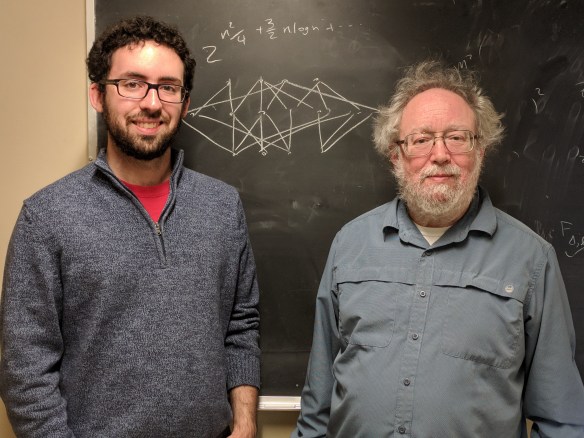By Steven Carlip and Samuel Loomis
Imagine you are given a bucket of points and asked to assemble them into a spacetime. What kind of “glue” would you need?
In causal set theory, the only added ingredient is the set of causal relations, the knowledge of which points are to the past and future of which. In particular, suppose your points were taken at random from a real spacetime, at some typical length scale ℓ. Then on scales large compared to ℓ, the causal diamonds – the sets formed by intersecting the past of one point with the future of another – determine the topology; the causal relations determine the metric up to a scale factor; and the remaining scale factor is just a local volume, which can be obtained by counting points. As the slogan of Rafael Sorkin, the founder of the field, goes, “Order + Number = Geometry.”

Samuel Loomis and Steven Carlip with their causal set.





You must be logged in to post a comment.